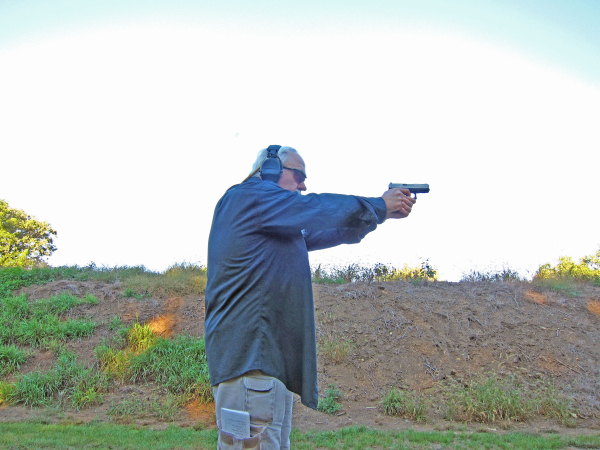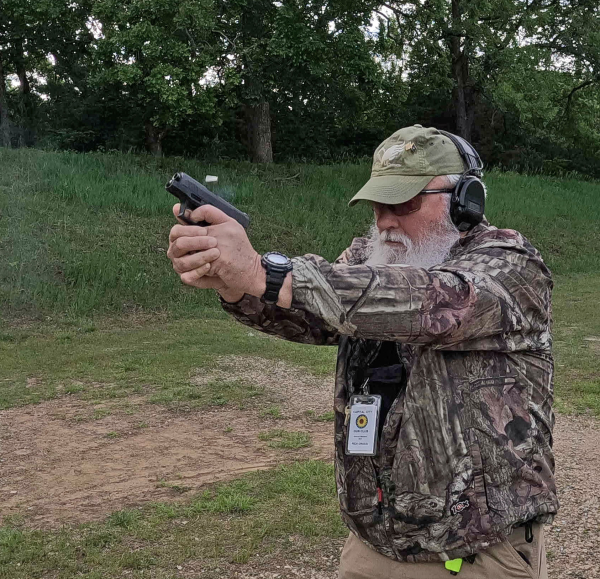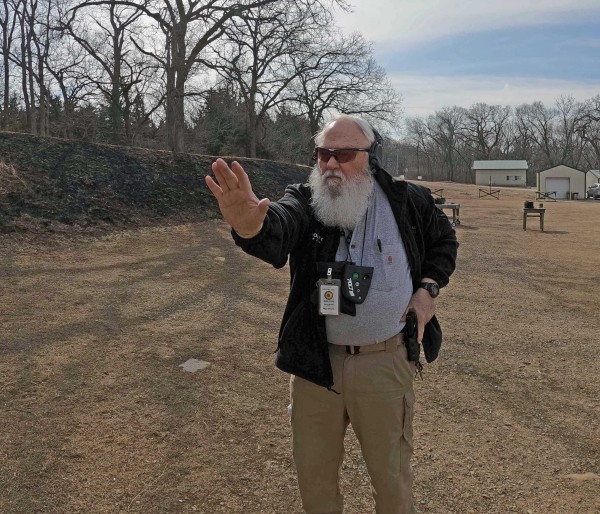Last week’s feature on the foundational Rule led to a former member of service –retired since 1993 – said “different strokes for different folks, I did it.” This was from an exchange on social media. It helps to understand that he began in police service in the late 1950s/early 1960s.
His statement had to do with gunpointing potentially dangerous violators. For example, if you get a robbery in progress call and arrive to find someone hurriedly leaving the case address with gun-in-hand, the ‘old’ police response was to draw, aim in and order the perp to halt.

That is something that’s not specifically prohibited in various states but consider the potential fact that the armed subject you’re seeing is the shop owner running after the perpetrator who just shot someone in his store.
While a citizen pursuing a violator is problematic – it unnecessarily raises the danger level for innocents including the robbery victim – it’s also prone to an error in judgement on the part of arriving police. If it were an off-duty officer pursuing the violator, gun in hand, it could well turn into what the press calls a “blue-on-blue” shooting.
What’s this got to do with gunpoint?
Does gunpointing someone provide a time advantage over having the muzzle averted?
What does a suspect think if they see someone at low ready with a stern disposition and with a commanding voice … do they think he’s unprepared to shoot?
Let’s take each issue in turn. As Jeff Hall noted in a piece he did for PoliceOne in 2009, when the officer says “it’s faster,” the response is:
Not so. I’ve tested instructors from Florida to Alaska and have found that it takes .48 to .52 seconds, either from the ready or on threat and “indexed”, to get a center mass hit on a known target, using an electronic timer. Ron Avery is the director of the Practical Shooting Academy (and Firearms Columnist for PoliceOne) and a world-class IPSC shooter and trainer. Ron’s research showed about .40 seconds. Ron does not feel that running around with guns in folk’s faces is a good tactic, either.


Consider that I take .18-.26 to press a shot on the Vickers Demand Drill (aimed in, finger on trigger, slack out; cut the beep of the timer in half with the gunshot). That’s a trigger control drill not a street tactic. If it takes me around .50 to make the hit from guard, can the offender tell it’s ¼ second slower?
That’s one reason I practice a lot from guard – as well as from a holster. The gun may already be in hand when “the flag flies” as Jeff Cooper would say.
Do you think the armed offender will be emboldened because you’re not aiming at him?
Have you taken many people into custody?
In my experience, hardened felons hardly bat an eye at gun muzzles pointed at them. A percentage have been shot before, some multiple times. It’s another day at the office for them. Let’s say it’s someone who’s at wit’s end, not a career criminal but someone who’s contemplating self-destruction. Their response is often “Go ahead, shoot me. I have nothing to live for.”
Now what? With the gun instead at ready, as you are moving to an obstacle – cover or concealment – while using cogent verbal skills, you’re literally better able to communicate – and to see the offender.

Okay, gunpoint is marginally faster. You see less of what you need to see and are more likely to be victim of mistaken judgement – the perp makes a quick reach for a cell phone to call his lawyer. (Or that’s his story …)
What about “the gun just goes off?” I’ve been told this happens nowadays with no trigger interaction at all. It’s been seen (usually fourth-or-fifth-or-more hand), it’s been reported in the always-right news media. It’s not been something ruled by a jury or a judge in the more recent cases.
If the gun is aimed in on a person – without any intention to immediately service that target – and the gun gets fired, regardless of how – what legal position are you in? While you may be justified in an intentional shooting, “There’s no such thing as a justifiable accident.” Justifiability, Ayoob notes, is a defense reserved for the intentional act.
I’d say that’s not good. The appropriate gunpoint is with the muzzle on threat, the finger on the trigger and the ignition sequence initiated. If you’re not doing that, you have no business with muzzle on meat.
Wait? What about gunpoint with finger off the trigger?
You’ll never convince anyone of that story. There’s more than enough video evidence of “trigger confirmation” in simulations; we know they happen out in the world.
When our agency transitioned to new guns in 2003, part of the class I taught was their new “gunpoint.” It was a muzzle averted low ready. They practiced that quite a bit.
It’s a disadvantage you say?
That’s the cost of being with the ‘good guys.’ Gunpoint provides only two very minor advantages – along with huge downside risks. Don’t do it.
-- Rich Grassi